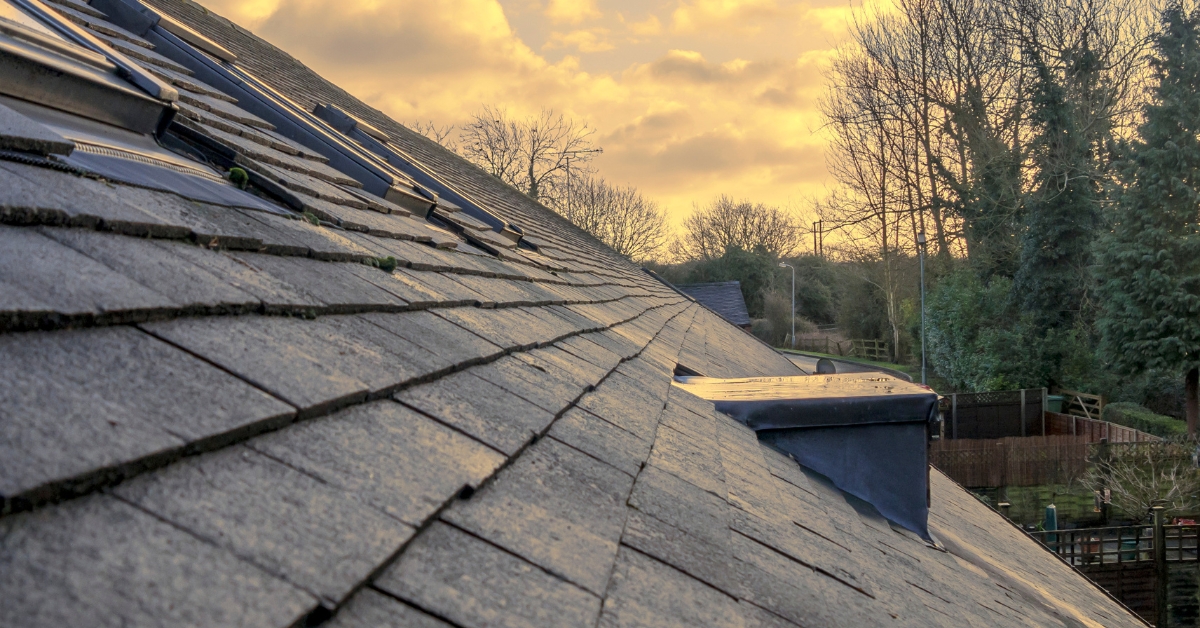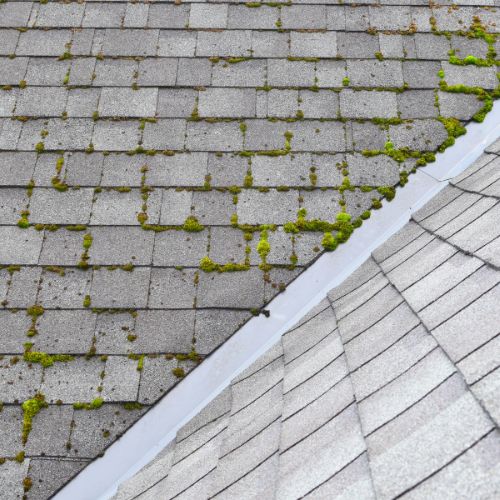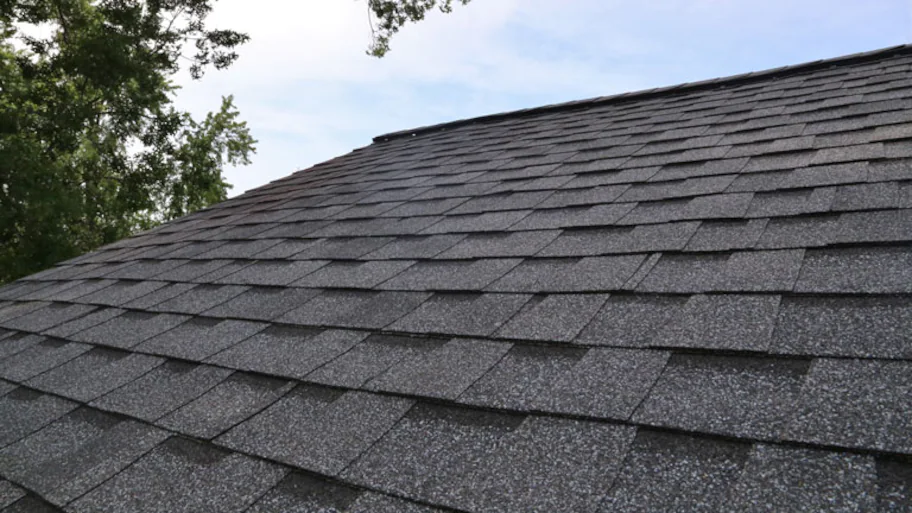Keep Dry Roofing LLC: Your Best Partner for Top-Quality Roofing Services
Keep Dry Roofing LLC: Your Best Partner for Top-Quality Roofing Services
Blog Article
Ultimate List for Examining the Condition of Your Roof System and Identifying Prospective Issues
By adhering to an extensive list tailored to review the various parts of your roof covering, you can obtain beneficial insights right into its current state and preempt any kind of impending troubles. This positive strategy not only guarantees the long life of your roofing however additionally contributes to maintaining the architectural integrity of your home.

Roofing Examination Tools
When performing a thorough assessment of a roofing system, using ideal roofing evaluation tools is essential for exact examination and evaluation. These devices aid in identifying potential problems, assessing the general condition of the roof covering, and determining the needed upkeep or fixings required. Among the primary devices used in roof covering inspections is a dampness meter, which aids identify locations of caught moisture within the roof layers that might show leaks or water damages. Infrared thermography electronic cameras are also beneficial as they can discover temperature level variations that may indicate insulation troubles or leaks not noticeable to the naked eye. Additionally, drones outfitted with high-resolution video cameras offer airborne views of the roofing, allowing inspectors to assess hard-to-reach locations safely.

Moreover, a digital cam or mobile phone is vital for recording the inspection process, capturing pictures of any type of damages or areas of worry for additional evaluation. Other tools such as binoculars, roofing system probes, and security tools like harnesses and ladders are crucial for a detailed and risk-free roof covering examination. By making use of these devices successfully, inspectors can conduct detailed assessments, recognize issues promptly, and suggest suitable solutions to keep the roof covering's integrity.
Exterior Roof Covering Analysis
To completely analyze the condition of a roof covering system, an outside roof assessment is important to inspect the surface for indications of wear, damages, or potential issues. During an outside roofing system examination, it is vital to begin by checking out the tiles or roof covering material. Look for any kind of missing, cracked, or curled tiles as they can show water penetration and prospective leaks. Look for moss or algae development, which can trap wetness and cause degeneration in time. Additionally, inspect the blinking around vents, smokeshafts, and skylights to ensure they are safe and in good problem to stop water seepage.

Moreover, examine the gutters and downspouts for obstructions or damage that can lead to water backup and overflow onto the roof covering (Keep Dry Roofing LLC). Cut back any kind of looming branches that can massage versus the roofing system surface area or supply very easy access for insects. Finally, assess the overall cleanliness of the roof covering, as debris build-up can preserve moisture and accelerate roof covering degeneration. By carrying out a comprehensive outside roof covering assessment, house owners can identify and resolve potential issues before they intensify right into expensive repair services.
Interior Ceiling Analysis
Upon entering the indoor area, a complete assessment of the ceiling is crucial to recognize any type of signs of water damage, leaks, or structural problems. Begin by visually checking the ceiling for any kind of discoloration, drooping, or peeling off paint, as these could show water infiltration from the roof covering. weblink Try to find water discolorations or mold and mildew growth, which are clear signs of a leakage. Pay close interest to any kind of areas where the ceiling meets the walls or where lighting fixtures are mounted, as these are usual spots for water invasion. In addition, check for any type of indications of drooping or unevenness in the ceiling, which could recommend structural troubles that require immediate interest. Use a flashlight to check out hard-to-reach edges and holes extensively. Any kind of stuffy smells or wetness in the air ought to also raise issues concerning possible roofing concerns. Putting in the time to evaluate the indoor ceiling can help identify roof problems beforehand and prevent additional damages to the building.
Attic Exam
An in-depth evaluation of the attic is necessary in examining the overall problem and efficiency of the roofing system. The attic room works as a critical component of the roof covering system, offering understandings right into possible problems that may not show up from the outside or inside of the home. Throughout the attic assessment, it is very important to look for signs of water damage, such as water stains, mold and mildew growth, or decomposing timber, which could indicate a leak in the roofing. Additionally, examine the insulation for any type of indications of damage or compression, as appropriate insulation is essential for keeping power effectiveness and stopping ice dams. Try to find appropriate ventilation to make certain that excess warm and moisture are being properly aerated out of the attic room to avoid moisture-related issues. Finally, check out the attic structure for any type of indications of sagging or this article damages, as these problems could compromise the honesty of the whole roof system. On a regular basis analyzing the attic room can aid determine possible roof issues at an early stage, permitting timely repair services and maintenance to extend the lifespan of the roof.
Resolving Usual Roof Troubles
Recognizing and promptly settling typical roofing system issues is critical in maintaining the structural honesty and durability of a roof. Among the most constant concerns house owners face is a leaking roof covering, usually brought on by harmed or missing tiles, incorrect installment, or tatty blinking. It's necessary to deal with leaks without delay to avoid water damages to the interior of the residential or commercial property and potential mold growth. An additional usual trouble is roof ventilation problems, which can cause excess warm and dampness build-up in the attic room, triggering early deterioration of the roofing materials. Poor ventilation can likewise lead to higher power expenses as a result of inefficient temperature policy. In addition, the accumulation of debris such as fallen leaves, branches, or snow on the roofing can block water drainage systems and cause water pooling, which may ultimately trigger roofing system leaks or structural damages. Normal evaluations and upkeep can aid recognize and deal with these typical roofing issues before they escalate into even more considerable problems.
Final Thought
To conclude, an extensive evaluation of your roof is necessary to recognize potential concerns and ensure the total condition of your roof covering. By making use of the appropriate tools and carrying out outside, attic, and inside assessments, usual roof covering issues can be resolved quickly. Normal upkeep and prompt repairs can assist avoid significant damages and lengthen the lifespan of your roofing system.
One of the primary devices used in roof inspections is a dampness meter, which aids determine locations of caught dampness within the roofing system layers that might indicate leakages or water damage. Other devices such as binoculars, roof probes, and safety tools like harnesses and ladders are essential for a secure and detailed roof covering assessment.To extensively examine the problem of a roofing system, an exterior roof analysis is important to inspect the surface for signs of wear, damage, or possible problems. Examine the overall tidiness of the roofing, as debris accumulation can retain wetness and increase roof wear and tear. Keep Dry Roofing click to find out more LLC. Additionally, the buildup of debris such as leaves, branches, or snow on the roofing can block drainage systems and lead to water pooling, which may at some point create roof leakages or architectural damage
Report this page